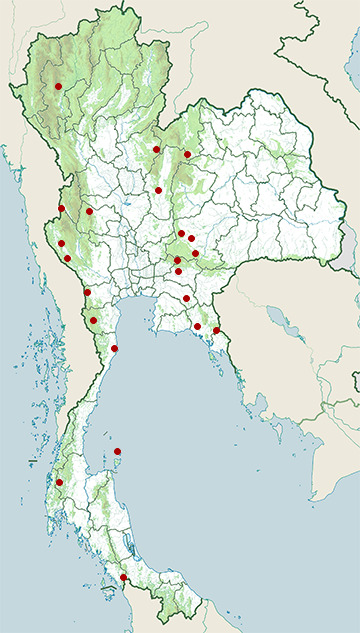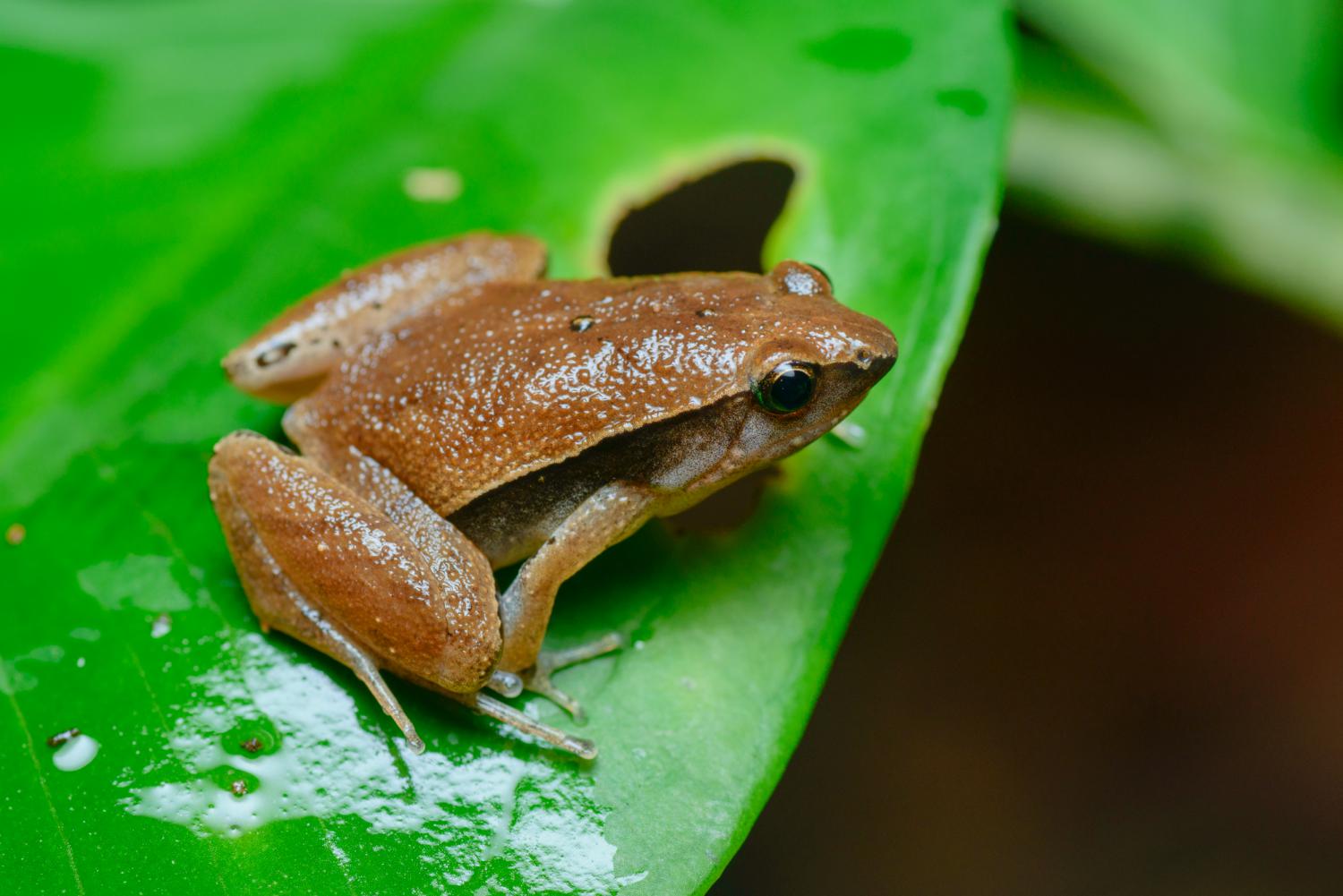Species of Thailand
Heymons' narrow-mouthed frog
Microhyla heymonsi
Carl Christoph Vogt, 1911
In Thai: อึ่งข้างดำ
Microhyla heymonsi (commonly known as the dark-sided chorus frog or the Taiwan rice frog) is a species of narrow-mouthed frog found in northeastern India, southern China, Taiwan, and Southeast Asia south to the Malay Peninsula and Sumatra as well as the Great Nicobar Island. It was originally described from Taiwan.
As microhylids in general, Microhyla heymonsi is a small frog: males reach 16 - 21 mm and females 22 - 26 mm in snout-vent length. The dorsal colour is pinkish or greyish above with a black lateral band extending from the snout tip to the groin and entirely covering the sides of the head. It inhabits a variety of disturbed areas as well as secondary vegetation. It breeds in temporary rain puddles, paddy fields, ditches, marshes and slow-flowing streams.
This article uses material from Wikipedia released under the Creative Commons Attribution-Share-Alike Licence 3.0. Eventual photos shown in this page may or may not be from Wikipedia, please see the license details for photos in photo by-lines.
Scientific classification
- Kingdom
- Animalia
- Phylum
- Chordata
- Class
- Amphibia
- Order
- Anura
- Family
- Microhylidae
- Genus
- Microhyla
- Species
- Microhyla heymonsi
Common names
- English:
- Heymons' narrow-mouthed frog
- Arcuate-spotted pygmy frog
- Dark-sided chorus frog
- Thai: อึ่งข้างดำ
Conservation status

Least Concern (IUCN3.1)
Photos
Please help us review our species pages if wrong photos are used or any other details in the page is wrong. We can be reached via our contact us page.
Range Map

- Bo Rai District, Trat
- Doi Inthanon National Park
- Huai Kha Khaeng Wildlife Sanctuary
- Kaeng Krachan National Park
- Khao Sam Roi Yot National Park
- Khao Sok National Park
- Khao Yai National Park
- Ko Pha Ngan
- Nong Phai District, Phetchabun
- Phu Hin Rong Kla National Park
- Phu Kradueng National Park
- Prachantakham District, Prachinburi
- Sai Yok National Park
- Sakaerat Environmental Research Station
- Sikhio District, Nakhon Ratchasima
- Suan Phueng District, Ratchaburi
- Sung Noen District, Nakhon Ratchasima
- Tha Mai District, Chanthaburi
- Tha Takiap District, Chachoengsao
- Thale Ban National Park
- Thong Pha Phum District, Kanchanaburi
- Thung Yai Naresuan Wildlife Sanctuary



